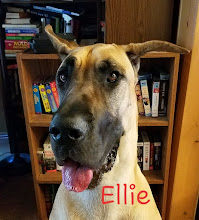I think everyone has heard how important it is to socialize puppies. But not everyone understands what that means. Sure, it includes exposing the puppy to lots of new experiences: new people, new animals (including other dogs), new places, etc.
But what's even more important is that those experiences must be positive. In other words, if the puppy isn't having fun then you're not going to get the result you hoped for. You may even trigger a fear response that will undo a lot of the work you've put into socializing the pup.
This is complicated by the onset of what is called "fear periods". A fear period is a developmentally NORMAL process for puppies, during which they may have a heightened fear response to new experiences. Sometimes they even become afraid of something they weren't afraid of previously.
The difficulty is that fear periods don't happen at the same time for every dog, nor do they always last the same amount of time. Typically, pups go through a fear period sometime between 8 - 11 weeks, and again later, between 6 to 14 months.
The fear period doesn't last that entire time, these are just typical ranges for when it might happen. The fear period itself might only last a few days, or sometimes a week or more. Often, the owner doesn't even know that their puppy is going through/has gone through a fear period, if during that time the puppy isn't exposed to something it finds threatening.
But this doesn't mean you should just leave your pup at home, and isolate him in case he's going through a fear period!! Far from it - you always want to keep socializing the puppy. But if you find that he's suddenly acting scared of something that didn't bother him before - or if he seems scared or hesitant about something new - the rule is NEVER FORCE THE PUPPY TO APPROACH SOMETHING HE'S AFRAID OF. Give him space, and encouragement sure - but never force him. If after a few minutes he wants to approach the scary thing that's fantastic, and he should get an award (always keep treats in your pocket when you're with your puppy). But if he doesn't, that's OK. Try again another day.
But back to our pups, and the visitors they've had. We are having the pups meet as many different people as possible, different ages etc. No puppy is ever forced to interact with anyone, but generally if the visitor gets on the ground then the pups are all over them.



























































